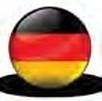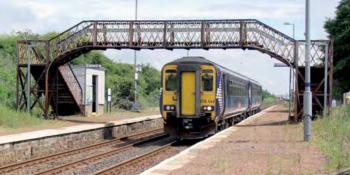
FLIXTRAIN REPLACES HKX
Major German (and European) long-distance bus operator Flixbus has taken over the open access rail services between Hamburg and Köln formerly operated by the German subsidiary of US-based Railroad Development Corporation (RDC Deutschland) and branded as HKX. HKX had been operating since 2012 and was not profitable, despite changes in the period from 2013 to 2015 to, among other things, its timetable and route network.
The re-liveried train in new Flixtrain colours (which are predominantly green, like the Flixbuses) started services on 23 March. Traction is provided by small German charter operator BTE (itself owned by RDC) using a leased Class 182.5 loco from MRCE. The new six day a week operation is presented as a co-operation between RDC and Flixbus, suggesting both partners are taking revenue risk. RDC believes the service has a better long-term prospect of being sold as part of and via the successful Flixbus online sales platform. HKX and Flixbus trialled working together over the Christmas 2017 period after HKX paused regular operation in October 2017, and the success of the trial led to the relaunch. Flixbus took over the former Locomore Berlin to Stuttgart service in conjunction with Czech open access operator Leo Express in August 2017; this was to be rebranded as Flixtrain from April.
The Flixbus move into rail makes sense, as it appears the market for long-distance bus travel has plateaued after rapid growth following deregulation in 2013. Figures for 2017, issued in April by German national statistical service Destatis, showed long-distance bus operator passenger numbers declining slightly to 22.8 million (down 0.8%), with a larger fall in passenger kilometres of 3.6% to 6.656 billion. Flixbus is by far the largest long-distance bus operator in Germany, with over 70% market share. The 2017 figures also show long-distance rail (almost all DB but with a small number of open access or international operators such as Thalys) saw rail passenger numbers grow by 2.3% (to 142 million journeys), with distance travelled growing by 2.6% to 40.427 billion passenger kilometres.



